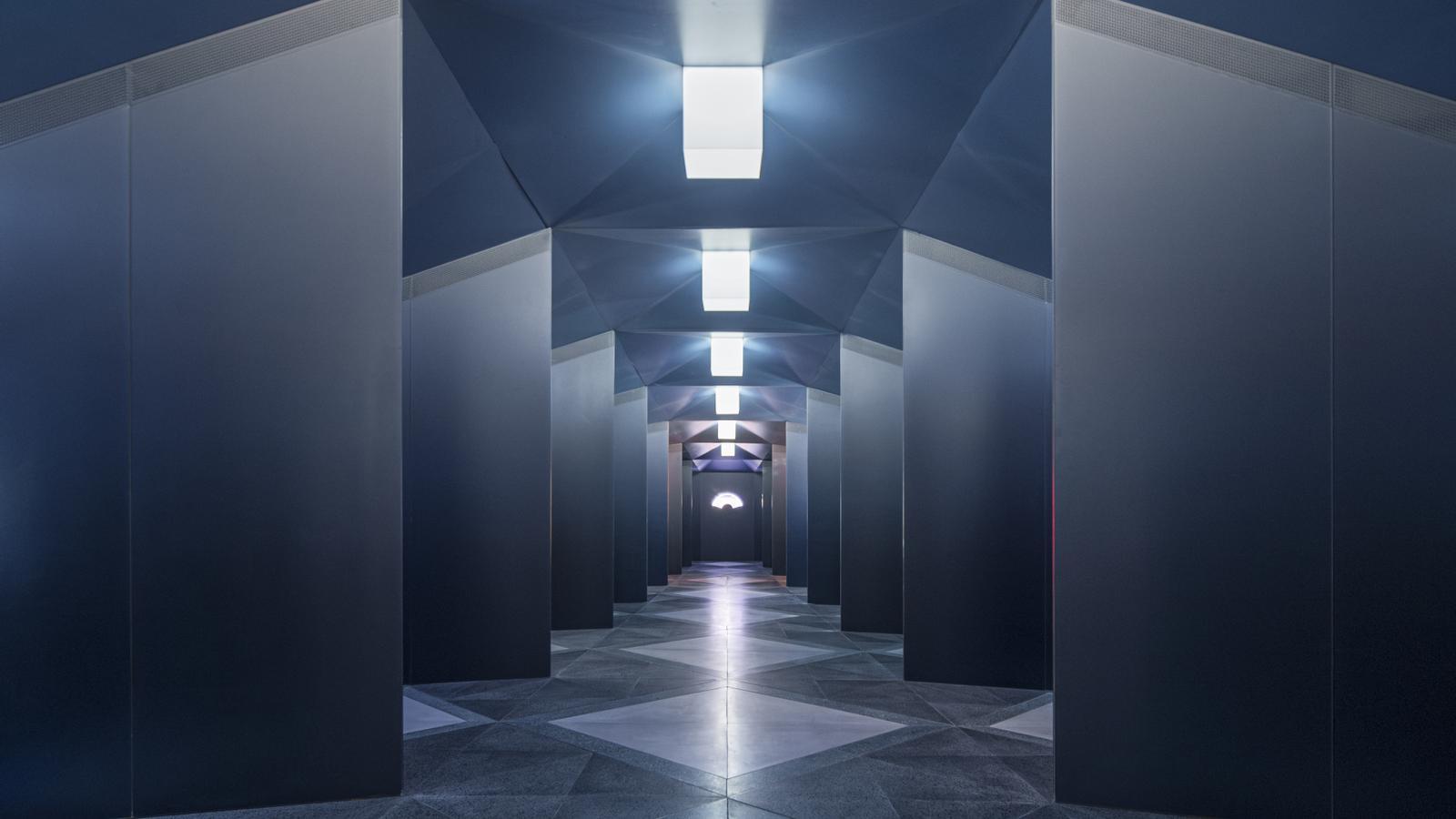"We've been recycling some materials for a long time, for example terrazzo , but we only did so with a portion of our scraps. Now, however, we recycle everything: everything we used to throw away not so long ago and now reincorporate into the production cycle. Urban mining has emerged as a key strategy in the context of sustainability: it's no longer construction waste," explains Biel Huguet. He gives as examples a green bathtub they've just unveiled—"which looks very pretty, but you'll find it even more so if you consider that it's all made from recycled materials," he points out—or a project in a hotel located in Gomila, Palma, where they've tried to use scraps from the same building to make sinks and dishes.
What do architects from around the world look for in Campos?
From Rem Koolhaas to Sergison Bates, the Huguet tile factory attracts the attention of leading architecture and design studios, with whom it collaborates on unique projects.


PalmWhen Biel Huguet (Campos, 1972) lists the architects and designers who keep an eye on what's happening at Huguet, the tile factory in Campos started by his godfather and which he has run since 1997, he's really reviewing the big names currently setting global trends. We're talking about architects and studios such as Herzog & de Meuron, Norman Foster, MVRDV, Sergison Bates, and Rem Koolhaas, among many others. "I don't know how to explain it, because I say it humbly and it may not sound familiar, but the reality is that we're a small factory in Campos that has the best architects in the world at its disposal," Huguet summarizes.
And it's not just that many of them stop by Campos from time to time to see what's cooking, or that many others invite Huguet to their offices every year to discuss their latest projects: it's that they have been approaching many of them for some time now with the intention of launching projects together. This is the case of designer Jasper Morrison, with whom they debuted at Can Pa just over a year ago, an oven located in El Terreno, Palma, and with whom they already have a new project in the works. And that of Pritzker Prize winner Rem Koolhaas, with whom they worked on the design of the Tiffany's store in Tokyo. And also Barozzi Veiga, the studio in charge of the design of the Abby Kortrijk Museum of Visual Arts in Belgium, a project that has also seen Huguet participate, in addition to collaborations such as those with Lluís Clotet and the design studio BIG on the new Huguet collections that are just beginning to be presented. "In the case of BIG, it's a collection they proposed to us and that we will present at Barcelona Design Week next October," explains Biel Huguet, who assures that he has managed to place the factory he runs on the map of contemporary design and architecture by "defending the craft and always wanting to go a little further."
Compacted earth tiles
This "wanting to always go a little further" is demonstrated in the various lines of research they are currently working on, all in pursuit of maximum sustainability. The most recent example, and surely one of the most surprising, is the new collection of compacted floor tiles. "It's a sustainable and traditional material that we can leverage even more thanks to all the knowledge we've acquired over the years," explains Biel Huguet, "and it's been widely used here lately, but has been on the rise for years in countries like Switzerland."
That compacted earth has become a fundamental material in contemporary architecture is demonstrated by local projects that have enjoyed international acclaim, such as Ca na Pau, a work by the Mallorcan studio Munarq, and Casas de Tierra, a series of 43 subsidized homes in Ibiza designed by the studio. Both projects, in fact, were featured in the latest edition of the Venice Biennale, the world's largest architectural exhibition. Compacted earth is now also featured in Huguet tiles. "They're highly recyclable and reusable, and have hygroscopic properties that help regulate humidity and temperature," explains Biel Huguet, "although it's true that aesthetically, at least until now, compacted earth tends to be very coarse, very brown, very the same. And that's why what we've tried to do is bring it into our field - even colors and designs without losing either the advantages or the authenticity of the material," adds Huguet, who advances that these compacted earth tiles will soon be on display in an art gallery in Paris.
In this sense, he emphasizes that the ability to preserve authenticity and use it to give shape to singular ideas has become one of the main hallmarks of the factory he directs, which has served to capture the attention of major architectural firms from around the world. "In much of Europe, trades have disappeared, and everything is now industrial, made by machines," he explains, "which means we can't make custom-made pieces or on a human scale. And we have this at our fingertips; it's our way of working, always connected to materials and craftsmanship, in search of unique pieces that, for me, have to do with poetry." This is what led to, for example, the doorstops made with Lluís Clotet, benches and tables with Jasper Morrison, a series of tessellations with the Ripoll Tizón brothers, and the aforementioned collaboration with Rem Koolhaas, among others. "In this case, for the Tokyo store, they were looking for very specific, strange shapes, as well as very specific densities and colors, and those are things we can offer right now," Huguet emphasizes.
'At the Mallorcan store'
Samples of some of these recent projects will be on display at the biennial exhibition held at the Campos factory from August 11th to 29th. With creative direction by Carles Oliver and David Mayol, and graphic design by Pablo Martín, the exhibition is open Monday through Friday mornings and also includes samples of one of his "most emblematic" projects, as Biel Huguet himself defines it, despite being also recent. "The floating sauna we made with Estudio Herreros in the port of Oslo, which is something I never could have imagined we would be able to do," he says with a smile, "but which once again required specific conditions. It's a very flexible space, because despite having foundations in the water, it is also subject to consideration."
We are waiting to share more details about a future collaboration with Herzog & de Meuron, also Pritzker Prize winners and responsible for projects such as the Forum building in Barcelona and the National Stadium in Beijing, and new participations in projects by the prestigious design studio BIG, among many others, Biel Hugo local, which are also currently setting trends in international architecture. "We try to work with young firms to help us evolve, and people like Jaume Mayol and Carles Oliver, who are simply brilliant, allow us to jointly commit to certain values and a way of doing things 'in the Mallorcan way', and that is currently also having an impact around the world."
